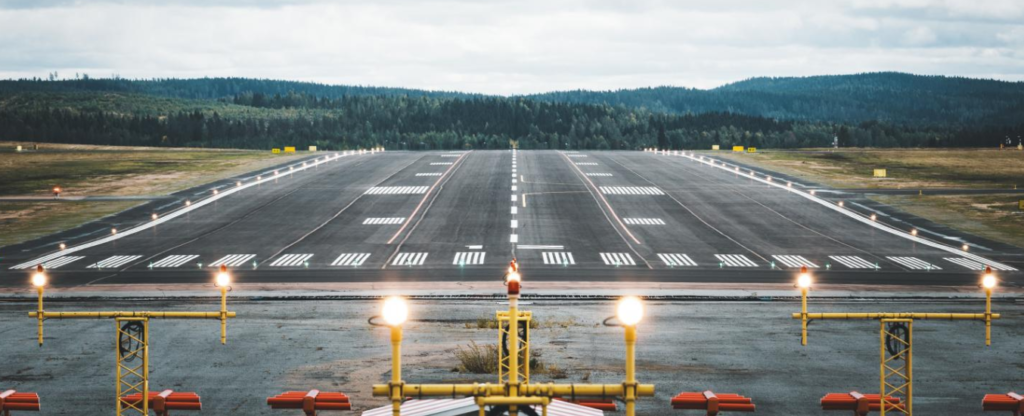Understanding the Importance of Airfield Lighting Maintenance: A Comprehensive Approach to Safety and Reliability
Airfield lighting is a critical component of airport infrastructure, providing essential guidance for aircraft during take-off, landing, and taxiing operations. Proper airfield lighting maintenance is crucial for ensuring that these systems operate reliably and safely. This blog explores the importance of maintaining airfield lighting systems, highlighting best practices, potential issues, and the impact on airport operations.

Content
The Role of Airfield Lighting in Aviation Safety
Airfield lighting systems play a vital role in aviation safety by helping pilots navigate the airfield, especially during low visibility conditions such as fog, rain, or night-time operations. These systems include runway lights, taxiway lights, approach lights, and signage, each serving a specific purpose to guide aircraft and prevent accidents.
Runway lights mark the boundaries of the runway, providing essential visual cues for landing and take-off. Taxiway lights guide aircraft along the taxiways, ensuring they stay within safe boundaries while moving to and from the runway. Approach lights assist pilots in aligning with the runway during the final approach, while signage provides critical information about runway intersections, taxiways, and other operational areas.
Without proper airfield lighting, the risk of runway incursions, misalignment, and other safety hazards increases significantly. Regular maintenance ensures that these lights function correctly, helping to prevent accidents and maintain smooth airport operations.
Best Practices for Airfield Lighting Maintenance
Effective lighting maintenance involves a comprehensive approach to ensure that all components of the lighting system remain in optimal condition. Here are some best practices for maintaining airfield lighting:
- Regular Inspections: Routine inspections are essential to identify and address any issues before they escalate. Inspections should include checking the condition of light fixtures, cables, control systems, and associated equipment. Regular visual inspections help detect problems such as burnt-out bulbs, cracked lenses, or damaged wiring.
- Scheduled Cleaning: Dust, debris, and environmental factors can accumulate on light fixtures, reducing their effectiveness. Regular cleaning of lenses and housing units is necessary to maintain optimal light output and visibility. Scheduled cleaning also helps to prevent the build-up of dirt that could potentially cause malfunction or degrade performance.
- Timely Repairs and Replacements: Addressing minor issues promptly can prevent them from becoming major problems. Any faulty lights, damaged cables, or malfunctioning control systems should be repaired or replaced as soon as possible. Keeping an inventory of essential spare parts ensures that repairs can be completed quickly, minimising downtime and maintaining safety.
- System Upgrades: As technology advances, it is essential to keep airfield lighting systems up to date. Upgrading to more energy-efficient lighting, such as LED systems, can enhance visibility, reduce maintenance costs, and lower energy consumption. Additionally, modern control systems can offer improved reliability and ease of management.
- Training and Procedures: Ensuring that maintenance personnel are well-trained and follow established procedures is crucial for effective airfield lighting maintenance. Comprehensive training programmes and clear maintenance procedures help to ensure that tasks are performed consistently and to the highest standards.
The Impact of Poor Maintenance on Airport Operations
Neglecting lighting maintenance can have severe consequences for airport operations. Reduced visibility due to faulty lighting can lead to increased risk of accidents, runway incursions, and operational delays. Pilots rely heavily on the clarity and reliability of airfield lighting to make safe landing and take-off decisions. Any issues with the lighting system can disrupt flight schedules and cause significant delays.
Additionally, frequent malfunctions and failures can lead to increased maintenance costs and operational inefficiencies. The need for emergency repairs or temporary lighting solutions can be costly and disruptive, impacting the overall efficiency of airport operations. Ensuring regular and effective maintenance helps to avoid these issues and keeps the airfield functioning smoothly.
Regulatory Requirements and Standards
Airfield lighting maintenance is subject to various regulatory requirements and standards set by aviation authorities. Compliance with these regulations ensures that the lighting systems meet safety and performance criteria. For example, the International Civil Aviation Organization (ICAO) and local aviation authorities have established standards for airfield lighting systems, including requirements for installation, maintenance, and operation.
Adhering to these regulations not only ensures safety but also helps airports avoid potential penalties and operational restrictions. Regular audits and inspections by regulatory bodies may also be conducted to ensure compliance with these standards.
Conclusion
Maintaining airfield lighting systems is a critical aspect of ensuring aviation safety and operational efficiency. By following best practices for inspections, cleaning, repairs, and upgrades, airports can ensure that their lighting systems remain reliable and effective. The impact of proper airfield lighting maintenanceextends beyond safety, influencing operational efficiency and cost-effectiveness.
A comprehensive approach to lighting maintenance, combined with adherence to regulatory standards, helps to mitigate risks and enhance the overall safety and performance of airport operations. Investing in regular maintenance not only protects the infrastructure but also supports the smooth functioning of airport activities, contributing to a safer and more efficient aviation environment.

Donna is your friend in the know. Her blog is a treasure trove of insightful tidbits on a wide range of topics. From wellness to technology, she’s your source for staying informed and inspired.














